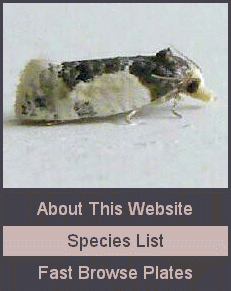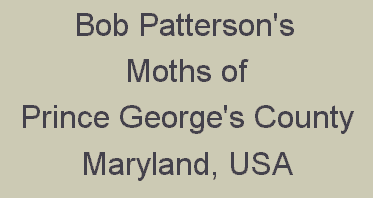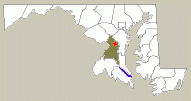Once upon a time (it was early October of 2003, but it seems so very long ago) I began a post-retirement hobby of photographing insects in my yard. I consulted with several friends to estimate the number of species that I might possibly encounter. I made a list:.....35 species of butterflies, 12 bees, 7 ants.....and so forth. I thought I might be able to photograph 200 species of insects (including spiders) in one year.
I kicked off my project with this photograph of grasshoppers mating.
What a lucky first shot! I was soon to find out that getting good photos isn't always so easy.
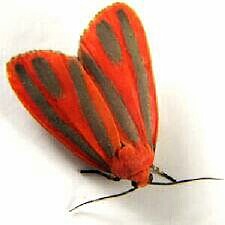
 We had an unusually mild October in 2003, shirtsleeve weather for the most part. I remember having a small display of pinned insects out in the driveway on Halloween when I had a very interesting evening talking to kids about bugs as I dispensed candy. Their parents thought it was pretty cool, too.
We had an unusually mild October in 2003, shirtsleeve weather for the most part. I remember having a small display of pinned insects out in the driveway on Halloween when I had a very interesting evening talking to kids about bugs as I dispensed candy. Their parents thought it was pretty cool, too.
Our first hard frost came on November 8th. The next morning it was as if someone had closed a curtain on my window looking out on the life surrounding me. Not an insect was stirring, not even a louse. The following day we left for Florida where I continued to photograph bugs, birds and other animals. I made a small website for my insects of Florida photos that generated a lot of email for several years. Back then if you typed "Florida Insects" into a Google search my page came up at the top of the list. There just wasn't a great deal of insect information on the Internet back then. Troy Bartlett was just beginning, at that time, to develop his wonderful and marvelously successful BugGuide.net and where the first insect photographs appeared in early 2004. Back then the prospect of using Internet resources as an aid to the identification of moths was pretty bleak. There just wasn't very much in the way of moth material out there.
When we got back home from Florida I spent a couple of months organizing my photographs and placing them on webpages. I discovered that in the first month spent photographing insects in my yard that I had recorded 258 species, and that exactly 1/3 of them, or 86, were of moths. I was astounded by the number of moth species, and how easy it was to find them. All I had to do was to turn on the three coach lanterns mounted to the outside walls of our house. The night after I first became aware of moths congregating near those lights I photographed 22 individuals, among which there were 16 different species.

 But I had great difficulty getting reasonably decent images of moths using my camera's flash. If I was close enough for a large photo of the insect the flash often produced a washed out image. If the moth was too close to the light fixture, the incandescent light coated the photo with a caramel-colored haze. I soon learned that I could capture moths in prescription medicine vials, chill them in the refrigerator, and photograph them in my indoor moth studio – the top of our washing machine – where the lighting was bright. Then I released them back outdoors. I have used this system ever since, with some refinements regarding lighting and location of the studio.
But I had great difficulty getting reasonably decent images of moths using my camera's flash. If I was close enough for a large photo of the insect the flash often produced a washed out image. If the moth was too close to the light fixture, the incandescent light coated the photo with a caramel-colored haze. I soon learned that I could capture moths in prescription medicine vials, chill them in the refrigerator, and photograph them in my indoor moth studio – the top of our washing machine – where the lighting was bright. Then I released them back outdoors. I have used this system ever since, with some refinements regarding lighting and location of the studio.
The only other major change that I have made is in the method of attracting moths. I learned that mercury vapor (MV) and black lights attract many more moths, and other insects, than do traditional incandescent light bulbs. I have experimented in using these lights beside the wall of the house, at a sheet mounted on a frame in the side yard, and in a specially constructed screened in gazebo that I call the Moth Taj Mahal. This is an 8' x 8' live trap with a light fixture on the roof. A funnel below the light fixture permits passage of the moths into the room below. I can enter the room and take all the time I want to look over the resting moths and select those that I wish to photograph. Previously I had to be outside for considerable periods of time to capture moths on the walls or at the sheet. They were of course free to come and go and many species might possibly be missed simply because I was not there to see them. The Taj Majal permits me to go to bed in the evening and get up before dawn to see what the night has brought me. When I have selected moths to photograph I simply open the doors to the Taj and let the insects leave. I first used the Taj during the 2007 season.
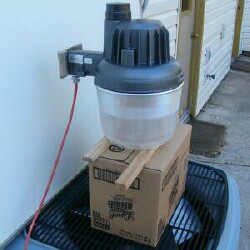
 I had made up my mind to photograph as many moths as possible in 2004. In April I began using a MV light as shown in this photograph. Nothing fancy about the arrangement, sitting on a carton on top of our air conditioner. There is a white door panel beside it, leaning against the wall of the house. Later, when the air conditioner came into use, I moved the light about 20 feet to a point between our two side doors where it sat atop an overturned trash can. I also used a black light at a sheet that was set up in some dense vegetation in the side yard, near a small creek that runs past our property. That year I ran the total number of species photographed up to about 700.
I had made up my mind to photograph as many moths as possible in 2004. In April I began using a MV light as shown in this photograph. Nothing fancy about the arrangement, sitting on a carton on top of our air conditioner. There is a white door panel beside it, leaning against the wall of the house. Later, when the air conditioner came into use, I moved the light about 20 feet to a point between our two side doors where it sat atop an overturned trash can. I also used a black light at a sheet that was set up in some dense vegetation in the side yard, near a small creek that runs past our property. That year I ran the total number of species photographed up to about 700.
The pace of adding new species slows down in subsequent years, but it doesn't stop. I added more than 100 new species in 2010, a little more than one per night, and the total species count for my yard now stands at a little more than 1,100. And there are more yet to be added in years to come.
The biggest problem that I encountered in 2003-2004 was in getting my moths identified. When I started moth photography I had only the small Golden Nature Guide to Butterflies and Moths. With it I was able to identify 15-20 species. I did not know that there had been a long out of print Field Guide to the Eastern Moths in the Peterson Field Guide Series. I did find a copy of that at my local library in April or May of 2004 and made heavy use of it until a new edition of it was published in 2005. But there were very few resources available at that time on the Internet.
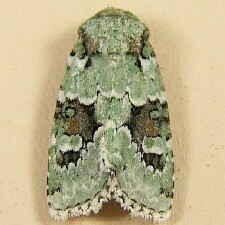
 Early in 2004 I met Larry Line who happens to live about 30 miles from me and who has a very nice website for Maryland Moths. Larry had photographs of about 300 species, and I was able to find many of my moths on his webpages. Larry also introduced me to John Glaser, a collector who then lived in Baltimore, and who provided much help identifying moths and offered much encouragement as I built my collection of photographs.
Early in 2004 I met Larry Line who happens to live about 30 miles from me and who has a very nice website for Maryland Moths. Larry had photographs of about 300 species, and I was able to find many of my moths on his webpages. Larry also introduced me to John Glaser, a collector who then lived in Baltimore, and who provided much help identifying moths and offered much encouragement as I built my collection of photographs.
There was then only one other "major" website with photographs of living moths. Lynn Scott displayed images of about 400 species from her home near Ottawa, Ontario. A few smaller websites did exist, including those of John Himmelman in Connecticut, Steve Walter in New York, Cindy Mead in Michigan, Linda Alley in Texas and Amy Boyce in Ohio. James Adams also showed photographs for some of the species on his Moths of Georgia website. With the contributions of this group of photographers, and with considerable help and encouragement from James Adams in developing the first plates, a website was created under the name Moth Photographers Group of Eastern North America. At the time there was very little on the Internet for moths in the western states, although there was good Canadian material covering the Noctuidea. We continued under that name until it became possible to move the website to Mississippi State University under the auspices of the Mississippi Entomological Museum. At that time we began coverage of all of North America north of Mexico.
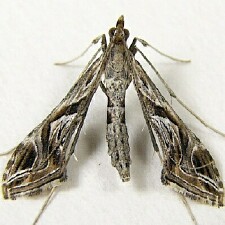
 Mothing, the pursuit of moths, has turned out to be a wonderful hobby for me. Actually, as is the case for many people, it has become a passion. I can hardly wait to see what my next new species will be. I have photographed moths that have not yet been described and named, and even a few of species which, at the time I photographed them, were not known to be found in North America. There are several instances in which my photographic record is the first indication that a species might be found in Maryland. The Eggplant Leafroller Moth shown at left is such a species. It was photographed just a few hours before I wrote this on September 25, 2010.
Mothing, the pursuit of moths, has turned out to be a wonderful hobby for me. Actually, as is the case for many people, it has become a passion. I can hardly wait to see what my next new species will be. I have photographed moths that have not yet been described and named, and even a few of species which, at the time I photographed them, were not known to be found in North America. There are several instances in which my photographic record is the first indication that a species might be found in Maryland. The Eggplant Leafroller Moth shown at left is such a species. It was photographed just a few hours before I wrote this on September 25, 2010.
Due to my moth-related activities I have met and been befriended by many people, through emails and in person. It has been a delightful experience for me. I owe a debt of gratitude to many persons who have helped to identify my moths. They include James Adams, Bob Belmont, Richard Brown, Don Davis, Rick Gillmore, John Glaser, John Gruber, Chuck Harp, Terry Harrison, Don Lafontaine, Jean-François Landry, SangMi Lee, Larry Line, Debbie Matthews, Hugh McGuinness, Michael Sabourin, Chris Schmidt, Brian Scholtens, Anthony Thomas and Jim Vargo.
One point that I feel must be emphasized is the tentative nature of the identification of moths when based solely on photographs. In some cases my identifications will turn out to be in error. All such errors are mine alone, and all names given on these pages should be used with caution.
|
